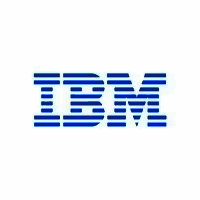Description

Citrix Hypervisor

Lanamark Suite
Comprehensive Overview: Citrix Hypervisor vs Lanamark Suite
Citrix Hypervisor and Lanamark Suite are both tools used within the IT infrastructure management and virtualization domain, but they serve different primary functions and target markets. Here's an overview of both:
Citrix Hypervisor
a) Primary Functions and Target Markets:
- Primary Functions:
- Citrix Hypervisor (formerly XenServer) is a complete server virtualization platform, optimized for application, desktop, and server virtualization infrastructures. It provides tools to create and manage virtual machines (VMs), allowing multiple OS to run on a single piece of hardware. Key features include live migration of live VMs, virtual CPU and memory sharing, and disaster recovery.
- It supports high-performance workloads and is particularly strong in environments requiring integration with Citrix Virtual Apps and Desktops.
- Target Markets:
- Enterprises looking for a reliable server virtualization platform.
- Organizations using Citrix’s broader ecosystem for digital workspace solutions.
- Industries requiring high uptime and high-performance computing environments.
b) Market Share and User Base:
- Citrix Hypervisor is a well-established player in the virtualization market, but it generally has a smaller market share compared to leading competitors like VMware vSphere and Microsoft Hyper-V.
- Its user base often includes organizations already committed to the Citrix ecosystem and those needing virtualization solutions integrated with Citrix’s other offerings.
c) Key Differentiating Factors:
- Native integration with Citrix Virtual Apps and Desktops.
- A strong focus on security and performance optimizations.
- The ability to support complex, resource-intensive applications.
- Open-source foundation (originally based on the Xen Project).
Lanamark Suite
a) Primary Functions and Target Markets:
- Primary Functions:
- Lanamark Suite was focused on IT infrastructure and desktop assessments to enable the planning and optimization of IT environments. It involved hardware and software inventory, usage metering, and assessment of server and desktop environments.
- The suite provided tools for migration planning and preparing virtualization or cloud adoption initiatives, as well as IT asset management.
- Target Markets:
- IT consultants and managed service providers conducting assessments for clients.
- Businesses planning transitions to virtualized or cloud environments.
b) Market Share and User Base:
- Lanamark Suite is less prominent in comparison to Citrix Hypervisor, mainly because its focus on assessments and optimization targets niche segments within IT services.
- It serves primarily IT consulting firms and organizations in transition phases, thus having a narrower user base.
c) Key Differentiating Factors:
- Strong focus on IT assessments and optimization, rather than on virtualization itself.
- Tools designed to provide insights and recommendations for cloud and virtualization transitions.
- Appeals to service providers and consultants needing to gauge IT environments for performance tuning and future planning.
Comparing the Two Products:
- Functional Approach: Citrix Hypervisor offers a broad virtualization platform aimed at hosting applications and desktops. Meanwhile, Lanamark Suite focuses on providing insights and readiness assessments for virtualization and cloud transitions without hosting capabilities.
- Integration and Ecosystem: Citrix Hypervisor is part of a larger ecosystem, which includes Citrix Virtual Apps and Desktops, providing seamless integration in environments using Citrix solutions. In contrast, Lanamark Suite serves more as a pre-virtualization or optimization tool.
- Market Presence: Citrix Hypervisor is generally more known in the server virtualization market, although overshadowed by larger competitors, while Lanamark Suite occupies a niche space with limited competition but also a narrower market reach.
Overall, the choice between these products largely depends on specific organizational needs—whether the focus is on virtualization itself or on preparing and optimizing environments for virtualization and cloud adoption.
Contact Info

Year founded :
Not Available
Not Available
Not Available
Not Available
Not Available

Year founded :
Not Available
Not Available
Not Available
Not Available
Not Available
Feature Similarity Breakdown: Citrix Hypervisor, Lanamark Suite
Certainly! Below is a feature similarity breakdown for Citrix Hypervisor and Lanamark Suite:
a) Core Features in Common:
-
Virtualization:
- Both Citrix Hypervisor and Lanamark Suite support virtualization, enabling businesses to run multiple virtual machines (VMs) on a single hardware host.
-
Resource Management:
- Each platform provides tools for managing system resources such as CPU, memory, and storage allocation for optimal performance of VMs.
-
Scalability:
- Both solutions offer scalability, allowing users to adjust the size and number of VMs to meet business demands.
-
Security:
- Basic security features like user authentication and access controls are present in both solutions to protect virtual environments.
b) Comparison of User Interfaces:
-
Citrix Hypervisor:
- It provides a user-friendly and intuitive interface within the Citrix Studio that is designed for ease of use. The interface is typically aimed at simplifying the management of virtual environments with graphical dashboards and detailed analytics.
-
Lanamark Suite:
- The interface of Lanamark Suite is generally more focused on analytics and reporting, offering detailed visualization of IT assets and resource usage. Its UI is designed for data-driven insights, which might appeal to users focused on in-depth analysis and planning.
c) Unique Features:
-
Citrix Hypervisor:
- Live Migration: Unique in offering extensive live migration capabilities, allowing VMs to be moved across different physical servers without downtime.
- Enhanced Graphics Support: It supports high-performance applications with enhanced graphics capabilities, making it suitable for GPU-intensive workloads.
- Integration with Citrix Environment: Seamless integration with other Citrix solutions, which is advantageous for businesses already within the Citrix ecosystem.
-
Lanamark Suite:
- Comprehensive Virtualization Planning: It provides sophisticated planning and modeling tools for virtualization, particularly valuable in the planning phase of IT projects.
- License Management: Strong focus on license management and compliance, helping organizations track and optimize software license usage.
- Detailed Asset Reporting: Offers deep asset inventory reporting with advanced analytics capabilities, beneficial for IT decision-making and strategy development.
In conclusion, while Citrix Hypervisor focuses more on the operational aspects of managing and running virtual environments, Lanamark Suite excels in planning, analysis, and reporting, catering to users who require detailed insights into their IT landscapes.
Features

Not Available

Not Available
Best Fit Use Cases: Citrix Hypervisor, Lanamark Suite
Certainly! When evaluating Citrix Hypervisor and Lanamark Suite, it is important to consider their specific strengths and use cases to determine how they fit into different business contexts and industry verticals.
Citrix Hypervisor
a) Best Fit Use Cases
-
Enterprise-Scale Virtualization: Citrix Hypervisor is well-suited for large businesses and enterprises that require scalable and robust virtualization solutions. It provides support for complex, high-demand IT environments where performance, scalability, and security are crucial.
-
Cloud Infrastructure: Companies building private or hybrid cloud solutions often choose Citrix Hypervisor because of its interoperability with cloud management platforms and integration with other Citrix products.
-
VDI (Virtual Desktop Infrastructure): Organizations looking to implement or enhance a virtual desktop infrastructure can benefit from Citrix Hypervisor's capabilities. It optimizes performance for high workloads and integrates seamlessly with Citrix Virtual Apps and Desktops.
-
Disaster Recovery and Business Continuity: Businesses that prioritize uptime and data protection may choose Citrix Hypervisor for its advanced disaster recovery capabilities, including live migration and backup solutions.
Lanamark Suite
b) Best Fit Use Cases
-
IT Asset Management: Lanamark Suite is ideal for businesses that need comprehensive visibility into their IT assets. It helps in planning, optimizing, and managing IT infrastructure effectively.
-
Virtualization Planning and Optimization: This suite is perfect for companies in the initial stages of virtualization projects. It aids in assessing current infrastructure, forecasting costs, and determining resource allocation.
-
Software Rationalization: Organizations looking to optimize software licenses and ensure compliance can leverage Lanamark for its detailed analytics and reporting capabilities.
-
Merger and Acquisition Due Diligence: Businesses involved in mergers or acquisitions can use Lanamark Suite to assess IT estates, identifying redundancies and opportunities for cost savings.
Industry Verticals and Company Sizes
Citrix Hypervisor
-
Industry Verticals: Citrix Hypervisor is widely used across various industries, such as healthcare, finance, government, and education, due to its high performance and security standards.
-
Company Sizes: While it can cater to small and medium-sized businesses, its features are most advantageous for larger enterprises requiring robust, scalable virtual environments.
Lanamark Suite
-
Industry Verticals: It is applicable across multiple sectors, including IT services, consultancy, and any industry with a strong need for IT infrastructure analysis and optimization.
-
Company Sizes: Lanamark Suite can be beneficial for both small and large businesses. Smaller companies might use it for initial assessments and rapid scaling, whereas large enterprises might focus on ongoing optimization and compliance checks.
In summary, Citrix Hypervisor is a leading choice for businesses seeking secure and high-performance virtualization, especially in complex, high-stakes environments. On the other hand, Lanamark Suite is excellent for organizations focusing on IT infrastructure planning, asset management, and optimization. Each product serves specialized purposes and is best aligned with specific business needs and scales.
Pricing

Pricing Not Available

Pricing Not Available
Metrics History
Metrics History
Comparing undefined across companies
Conclusion & Final Verdict: Citrix Hypervisor vs Lanamark Suite
To provide a comprehensive evaluation of Citrix Hypervisor and Lanamark Suite, we need to address each component separately before reaching a final verdict.
a) Best Overall Value
Citrix Hypervisor is a server virtualization platform based on the Xen Project, known for its robust performance, scalability, and integration capabilities with other Citrix products. It is particularly popular for enterprises that require a reliable, secure, and efficient virtualization solution integrated with VDI (Virtual Desktop Infrastructure).
Lanamark Suite is a platform for IT service providers that offers tools for asset management, virtualization assessment, and cloud migration planning. It is valuable for organizations looking to manage IT resources effectively, with a focus on planning and optimization.
Conclusion on Value: The best overall value depends on the specific needs of the organization. If the primary need is virtualization with robust enterprise features for large-scale deployments, Citrix Hypervisor may offer the best value. However, for organizations focused on IT assessment, planning, and management across physical and virtual environments, Lanamark Suite may provide more value.
b) Pros and Cons
Citrix Hypervisor:
-
Pros:
- High performance and scalability.
- Strong integration with other Citrix products like Citrix Virtual Apps and Desktops.
- Comprehensive management tools and features.
- Support for a wide range of operating systems and environments.
-
Cons:
- Can be complex to deploy and manage for small teams.
- Licensing costs can be high if not bundled with other Citrix solutions.
Lanamark Suite:
-
Pros:
- Useful for comprehensive IT assessments and planning.
- Facilitates migration to cloud and virtual environments.
- Can help optimize resource allocation and reduce costs.
-
Cons:
- Not primarily a virtualization solution; lacks hypervisor capabilities.
- More appropriate for assessment rather than as a standalone virtualization platform.
- May require integration with other tools for full functionality.
c) Recommendations
For organizations trying to decide between Citrix Hypervisor and Lanamark Suite, consider the following:
-
Primary Needs: Determine whether your main requirement is a high-performing virtualization infrastructure (go for Citrix Hypervisor) or IT environment assessment and management tools (choose Lanamark Suite).
-
Existing Ecosystem: If your organization already uses Citrix products, Citrix Hypervisor will integrate more seamlessly with existing systems, maximizing interoperability benefits.
-
Size and Scale: Consider the size and complexity of your IT environment. Citrix Hypervisor may be overkill for smaller organizations or those in the early stages of virtualization.
-
Cost Considerations: Evaluate your budget against the features needed. Citrix's pricing might be more justified for larger enterprises, whereas Lanamark Suite might appeal to those needing cost-efficient planning tools without committing to a full-scale virtualization solution.
-
Specific Use Cases: If planning cloud migrations or needing detailed assessments, Lanamark Suite’s tools could prove invaluable, while Citrix Hypervisor is unparalleled for enterprise-level virtualization deployments requiring stability and scalability.
In conclusion, the choice between Citrix Hypervisor and Lanamark Suite hinges on the primary focus of the organization—virtualization performance and integration versus IT assessment and resource management. Each offers unique advantages that align with different strategic IT goals.
Add to compare
Add similar companies



